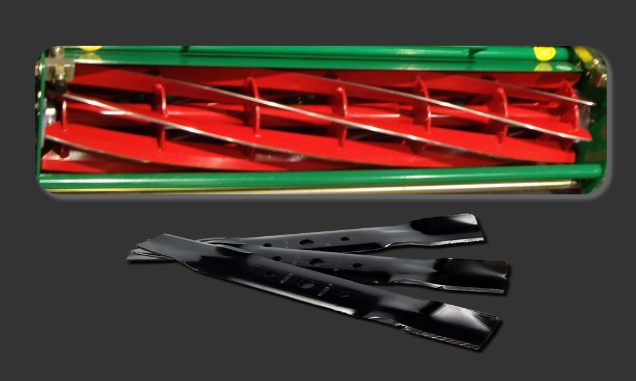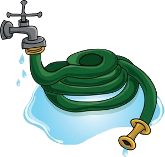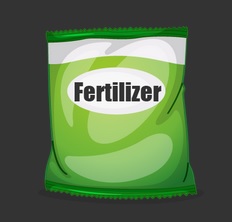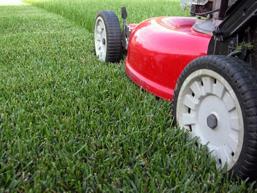
Tips For a Better Lawn
You might not know it, but your lawn pays you back for all the hard work you put into it – your lawn serves as a huge source of air conditioning for your garden, keeping it cool in the hot summer months. It also releases oxygen and simultaneously captures dust, keeping you and your family healthy. To reap the benefits to the full, keep your lawn as healthy as possible with these handy tips.

1. .Don’t Over-Mow
Longer grass is healthier grass
By keeping your grass tall you prevent weed seeds from growing by shading them out. You also keep the soil nice and cool, ensuring moisture is trapped and soil microbes are encouraged. These convert nutrients from the soil. It also promotes deeper root growth which helps fight against drought. However, varying the length slightly throughout the seasons can help maximize your lawns health. Never remove more than one third of the grass length on any one occasion. Each run up the lawn with the lawn mower should slightly overlap the previous one; put a mark on each side of the mower as your ‘overlap marker’. If you want ‘straight stripes’ on a large lawn or a lawn without a straight edge begin by mowing a straight line down the middle of the lawn. Now mow on either side of it Don’t worry about cutting ALL the grass at the edges of the lawn; if you do a final cut all around the perimeter of the lawn once or twice you’ll get all the end bits and add a ‘professional’ frame to your lawn mowing. If your lawnmower has a roller change mowing direction at least every month. If your mower has four wheels you MUST overlap each run so that the wheels do not go in the same place all the time. Repeated grass cutting in the same track will produce ruts and tramlines!. If the grass is damp or long slow down your speed (not the blade speed). If you are ‘scalping’ the lawn in some places (high spots) raise the mowing height. Scalped areas will often be mossy and/or weedy. Mow slopes and shady areas one setting higher than the rest of the lawn. If the lawn has a ‘silver sheen’ or ‘frayed’ look after mowing the blade(s) need sharpening. If you’re using a cylinder mower and the blade stutters or produces a ribbed or rippled effect in the lawn then either the mower is blunt or under powered or the grass is too long or too wet - slow down your lawn mowing speed and mow more frequently. Leave the box off if the mower instructions allow and weeds and weed grasses aren’t seeding; In summer to help conserve moisture. Lightly feed the lawn in the growing season for one or two cuts after applying liquid feed, seaweed or iron products.

2. Make Sure You Use a Sharp Blade
To ensure you cut your lawn cleanly and evenly, make sure you use a sharp and balanced blade. A blunt blade will have the damaging effect of tearing the grass rather than cleanly cutting it, meaning the ends of the grass blades may turn yellow but will grow out leaving no lasting effect. To maintain a sharp blade, avoid mowing over any stones as much as possible, making sure to sharpen and balance your blade three times a year. If you are using a traditional cylinder mower then you should have your mower sharpened and aligned once a year.
To ensure you cut your lawn cleanly and evenly, make sure you use a sharp and balanced blade. A blunt blade will have the damaging effect of tearing the grass rather than cleanly cutting it, meaning the ends of the grass blades may turn yellow but will grow out leaving no lasting effect. To maintain a sharp blade, avoid mowing over any stones as much as possible, making sure to sharpen and balance your blade three times a year. If you are using a traditional cylinder mower then you should have your mower sharpened and aligned once a year.

3. Don’t Overwater During Dry Spells
Well managed lawns can even have brown blades – the root of the grass can actually stay alive for months. Understandably, if you want to ensure a green lawn all summer, try to water heavily, on an infrequent basis. The aim is to encourage the roots to grow deep into the ground and the best way to achieve this is to water deep. If the soil is hard below the roots then they are restricted, while the moisture further down will work its way up to dryer soil at the top. Light sprinklings of water only feed the surface of the soil and the grass, which in turn promotes shallow root growth. In this instance the lawn will require more frequent watering. Lawns that are sandier may need double the watering, since they drain well. While, clay soils may need only half as much. However, as a general rule, provide 2.5-5cm (1-2in) of water per week, whether this is via a watering can, sprinklers or Mother Nature, applied at three-four day intervals. However, this does vary depending on the following factors: temperature, grass type, and soil condition. In terms of timing, first thing in the morning is the best time to water your lawn.
Well managed lawns can even have brown blades – the root of the grass can actually stay alive for months. Understandably, if you want to ensure a green lawn all summer, try to water heavily, on an infrequent basis. The aim is to encourage the roots to grow deep into the ground and the best way to achieve this is to water deep. If the soil is hard below the roots then they are restricted, while the moisture further down will work its way up to dryer soil at the top. Light sprinklings of water only feed the surface of the soil and the grass, which in turn promotes shallow root growth. In this instance the lawn will require more frequent watering. Lawns that are sandier may need double the watering, since they drain well. While, clay soils may need only half as much. However, as a general rule, provide 2.5-5cm (1-2in) of water per week, whether this is via a watering can, sprinklers or Mother Nature, applied at three-four day intervals. However, this does vary depending on the following factors: temperature, grass type, and soil condition. In terms of timing, first thing in the morning is the best time to water your lawn.

4. Weedkillers and Fertilisers:
Timing is Everything. There are a number of variables to take into account when applying gardening products to your lawn. These are mainly location, weed type, grass type, condition of soil and grass type. If you need to know more check our guides for identifying weeds and using weedkillers. Firstly, a healthy lawn is the best defence against garden weeds. So, you’re half way there if you’ve followed our guidelines so far! Next, it is advised to attack weeds in the early spring or summer – this way the weeds have yet had the chance to develop deep root systems or spread. When applying a fertiliser, do so in early spring to encourage root growth. Apply a specific Autumn lawn fertiliser in the autumn months to help the lawn recover from the Summer wear and prepare itself for a potentially harsh winter. While, light feedings throughout the year help maintain a healthy growing lawn. Furthermore, as always, read the labels fully and take note of requirements and warnings. Remember, it’s not necessarily how hard you work – actually it’s less about time than timing. The art is more 'how' and 'when' to achieve a perfect lawn.
Timing is Everything. There are a number of variables to take into account when applying gardening products to your lawn. These are mainly location, weed type, grass type, condition of soil and grass type. If you need to know more check our guides for identifying weeds and using weedkillers. Firstly, a healthy lawn is the best defence against garden weeds. So, you’re half way there if you’ve followed our guidelines so far! Next, it is advised to attack weeds in the early spring or summer – this way the weeds have yet had the chance to develop deep root systems or spread. When applying a fertiliser, do so in early spring to encourage root growth. Apply a specific Autumn lawn fertiliser in the autumn months to help the lawn recover from the Summer wear and prepare itself for a potentially harsh winter. While, light feedings throughout the year help maintain a healthy growing lawn. Furthermore, as always, read the labels fully and take note of requirements and warnings. Remember, it’s not necessarily how hard you work – actually it’s less about time than timing. The art is more 'how' and 'when' to achieve a perfect lawn.

5. Lawn Mower Cutting Tips
Here are a few quick tips that will keep your lawn looking great. Don’t cut wet grass, aside from having a tendency to clog the machine and leave clumps of wet grass all over your garden, wet grass won’t cut easily. It tears, just as it does with a dull blade. Taller grass will hold moisture better and will also allow the root system to “grab hold” of the soil better, which means a healthier lawn. Don’t mow in the same direction every time you cut: for example, one week mow north to south. The next week, mow east to west. This prevents ruts from forming in the yard and also lets the grass grow thicker. Use a grass catcher for the first cut and last cut of the season. Use the mulching feature the rest of the time to reduce yard waste and add nutrients back into the lawn.
Here are a few quick tips that will keep your lawn looking great. Don’t cut wet grass, aside from having a tendency to clog the machine and leave clumps of wet grass all over your garden, wet grass won’t cut easily. It tears, just as it does with a dull blade. Taller grass will hold moisture better and will also allow the root system to “grab hold” of the soil better, which means a healthier lawn. Don’t mow in the same direction every time you cut: for example, one week mow north to south. The next week, mow east to west. This prevents ruts from forming in the yard and also lets the grass grow thicker. Use a grass catcher for the first cut and last cut of the season. Use the mulching feature the rest of the time to reduce yard waste and add nutrients back into the lawn.
Lawn tips source: lovethegarden







